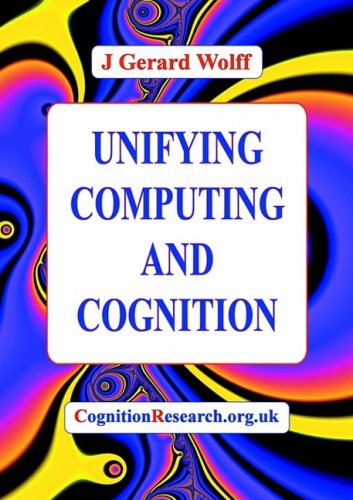Product desciption
Unifying Computing And Cognition J Gerard Wolff by J, Gerard Wolff 9780955072611, 0955072611 instant download after payment.
The SP theory - which has been under development since 1987 - is a radical synthesis of ideas across human perception, cognition and development, artificial intelligence, computer science, theoretical linguistics, neuroscience, mathematics, logic, and epistemology. It is a theory of information processing in all kinds of system, both natural and artificial, a new paradigm for information processing which incorporates principles of minimum length encoding pioneered by Solomonoff, Kolmogoroff, Wallace, Rissanen, and others, but which is built from new foundations and differs at a fundamental level from any existing theory or system. The SP theory has a dual role. It is a theory of engineering, the basis for a proposed SP machine with applications in artificial intelligence and in data storage and retrieval. At the same time, it is a theory of information processing in brains and nervous systems both at an abstract level and at the more concrete level of neurons and neural processing. The theory and its applications - which are the subject of this book - will be of interest to a wide range of researchers, academics, professionals and students in computer science (especially artificial intelligence), cognitive science, human perception, cognition and development, theoretical and computational linguistics, neuroscience, mathematics, logic, and the philosophy of mind and language. The SP theory has a sound mathematical framework but the ideas are presented in a way that will be accessible to a wide audience, without being overburdened with mathematical equations or logical notations. After the Introduction, Chapter 2 describes ideas and observations on which the SP theory is founded, that have provided some motivation for the development of the theory, or are simply part of the background thinking for the theory. Chapter 3 describes the theory itself and one of the main computer models in which the theory is embodied. And Chapter 4 shows how the SP theory can model the operation of a universal Turing machine and describes advantages of the theory compared with earlier theories of computing. In Chapters that follow, applications of the SP theory are explored: in the processing of natural languages, in pattern recognition and information retrieval, in various kinds of probabilistic reasoning, in planning and problem solving, in the unsupervised learning of new knowledge (with a second computer model), and in the interpretation of concepts in mathematics and logic. Further chapters describe how the abstract theory may be realised with neural structures and neural processes, how the SP theory relates to some current themes in cognitive psychology and how the SP theory and projected 'SP machine' may be developed in the future. An Appendix describes the version of dynamic programming that forms the core of the SP computer models, with significant advantages compared with standard forms of dynamic programming.


